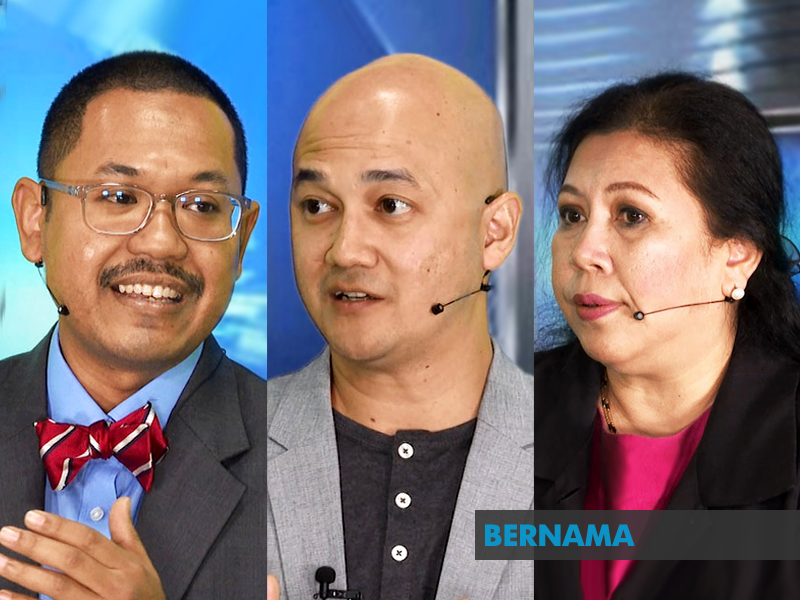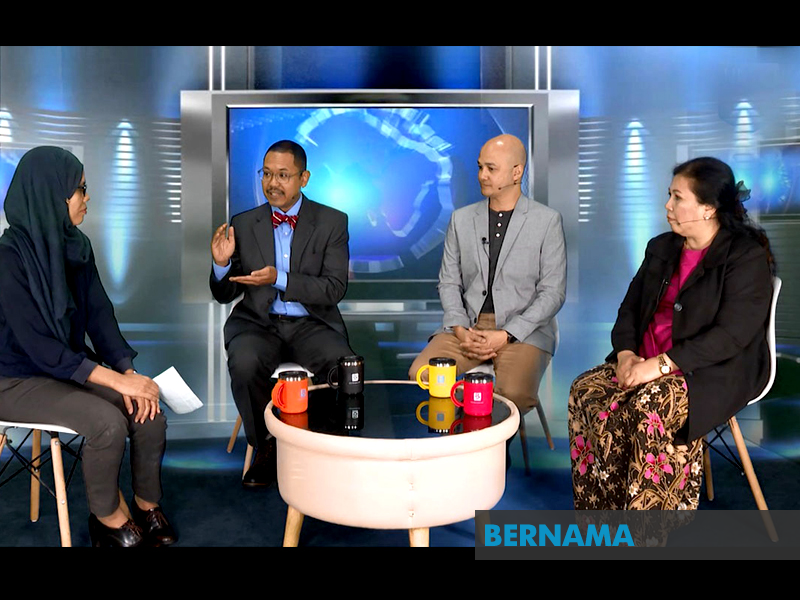UMSC's Interdisciplinary Approach To Easing Pain

By Ainul Huda Mohamed Saaid
KUALA LUMPUR (Bernama) -- For people suffering from chronic pain, even simple daily activities like taking a shower and getting dressed can be a torture. Anger, anxiety and even depression may ensue as a result of chronic pain, in view of the limitations they face and the debilitating nature of their condition.
In an exclusive interview with Bernama recently, experts from UM Specialist Centre ( UMSC ) shed light on pain management, a significant branch in medicine that utilises an interdisciplinary approach in easing the suffering and improving the quality of life of those living with pain.
Neurosurgery expert Dr Nor Faizal Ahmad Bahuri describes pain as an unpleasant sensation that can be felt whenever there is a tissue injury.
Pain can be divided into acute and chronic pain. Acute pain is the usual sensation that appears suddenly after an injury and may last for several minutes or even a number of days and, sometimes, up to weeks depending on the healing of the tissue.
“In chronic pain, the patient will feel the pain even more than three months after the healing process has taken place.

UMSC experts Dr Nor Faizal Ahmad Bahuri (left), Dr Norshazriman Sulaiman (centre) and Prof Dr Marzida Mansor. --fotoBERNAMA (2019) ALL RIGHTS RESERVED
“It causes not only physical pain but is also associated with emotional and behavioural pain as an adaptation to the long-standing discomfort,” said Dr Nor Faizal.
Anaesthesiologist Prof Dr Marzida Mansor said chronic pain itself can be divided into chronic primary pain and chronic secondary pain.
Chronic primary pain represents chronic pain as a disease in itself. As for chronic secondary pain, the pain is a symptom of an underlying condition.
Chronic primary pain is characterised by disability or emotional distress that is not better accounted for by other diagnoses of chronic pain. Examples of such pain include chronic pain syndrome such as widespread pain, chronic musculoskeletal pain, primary headaches, irritable bowel syndrome and chronic pelvic pain.
“And we also have chronic secondary pain which is caused by underlying diseases such as chronic cancer-related pain, chronic postsurgical or post-traumatic pain, chronic neuropathic pain due to lesion in the somatosensory nervous system, chronic secondary headache or orofacial pain, chronic secondary visceral pain and chronic secondary musculoskeletal pain," added Dr Marzida.
TREATING PAIN
According to interventional radiologist Dr Norshazriman Sulaiman, pain management experts comprise medical specialists who manage patients with primary complaints of pain.
“There are multiple ways to treat pain, including conventional and non-conventional ways.
“As a whole, there are many ways to treat pain. As you can see, with three different specialists (from UMSC ) here with different specialities (Dr Nor Faizal, Dr Marzida and Dr Norshazriman), together we create a multidisciplinary approach for pain management," he explained.
Among the treatments available are oral analgesics such as paracetamol and non-steroidal anti-inflammatory drugs and other relevant drug medication. Minimally invasive procedures such as steroid injection, spinal injection, peripheral nerve block and trigger point injection are also administered.
Dr Norshazriman pointed out that some of the pain conditions would require minimal invasive image-guided therapy that can be provided by an interventional radiologist.
Today, state of the art interventional radiology is widely discussed in the area of oncology, providing another arm in modern oncological management.
"This approach involves targeted therapy which is precisely directed at the tumour,” said Dr Norshazriman.

Bernama exclusive interview. --fotoBERNAMA (2019) ALL RIGHTS RESERVED
He added that besides conventional ways of treating pain, there are also alternative or complementary treatments like hypnosis, acupuncture, yoga and exercise. These methods have been acknowledged as part of the pain management plan in the western world and are gaining recognition in Malaysia.
Dr Marzida explained that occasionally surgery may be required to alleviate the chronic pain. In such a case, the patient will be referred to an appropriate surgeon for further investigation, evaluation and management. This approach is advised when necessary in cases such as spinal surgery or joint replacement.
“Physiotherapy, cognitive behavioural therapy, relaxation and breathing exercises are important measures used in treating patients with chronic pain. When pharmacological, physical and minimally invasive treatments don't work, we may include complementary treatments such as hypnosis, acupuncture, massage and also the use of TENS (transcutaneous electrical nerve stimulation).
"Complementary medicine may help, but the results may not be always consistent. That is why it always has to be used to complement conventional pain management and not as an alternative treatment,” she said.
UMSC PAIN CLINIC
Since chronic pain has been recognised as a disease entity by the World Health Organisation (WHO) through its publication ICD 11 (International Classification of Diseases 11th Revision), Marzida hopes that those suffering from pain would come forward to seek treatment.
“We do have an established pain clinic at UMSC . It is a multidisciplinary clinic encompassing the anaesthesiologist, neurosurgeon, interventional radiologist and a rehab physician.
“As a patient-centred care hospital, UMSC 's purpose is to provide our patients with a holistic pain management approach that will benefit them and enable them to regain their quality of life,” she added.
Edited by Rema Nambiar
-- BERNAMA
For more information click here
HealthEdge
EXCLUSIVE

Pet Vaccination, Public Awareness And Surveillance Key Towards Rabies-free Southeast Asia - Experts
KUCHING, Dec 11 (Bernama) -- The goal of making Southeast Asia free from human rabies can be achieved through a total understanding of the disease, how it can be prevented and responsible pet ownership among communities, say experts.
read more ››IN FOCUS

TAVI KAEDAH BAIK PULIH INJAP JANTUNG TANPA PEMBEDAHAN



